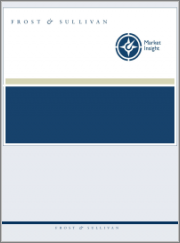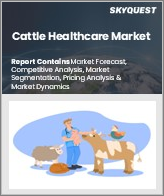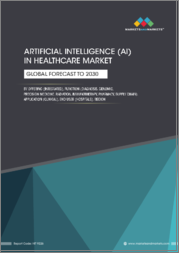
|
시장보고서
상품코드
1351239
사회경제적 발전 : 헬스케어의 성장 기회Socioeconomic Development: Healthcare Growth Opportunities |
||||||
디지털화, 정책 추진, 현지 생산이 헬스케어 및 관련 분야의 성장 기회를 견인
경제 전망은 부진하지만, 2023년에도 세계 헬스케어 산업은 견고한 신흥시장 성장, 팬데믹 이후 건강 중심 정책 강화, 주요 선진국의 급속한 고령화, R&D 비용 증가에 힘입어 밝은 전망을 이어갈 것으로 예상됩니다. 급속한 기술 발전과 디지털 혁신은 환자 결과와 의료 서비스에 대한 마지막 1마일 접근을 개선하고 있습니다. 인플레이션 압력, 통화정책의 긴축, 의료 준비 강화 요구로 인해 기업과 정부는 기술과 혁신적 접근 방식에 투자하고 이 분야의 장기적인 성과를 향상시킬 수 있는 정책 개혁에 착수해야 합니다.
이러한 상황에서 프로스트 앤 설리번은 지표화 기법을 활용해 매년 전 세계 헬스케어 시장의 경쟁력을 추적하고 있습니다. 성장, 혁신, 리더십을 통한 헬스케어 매력도 지수(GIL-H 지수)는 성장(G), 혁신(I), 리더십(L), 헬스케어(H)의 네 가지 지표로 구성된 여러 지표를 통해 각 국가를 평가하고, 강력한 데이터 기반 접근 방식을 통해 유망한 헬스케어 진출 지역을 파악합니다. 파악합니다. 강력한 국가별 순위 프레임워크는 기업이 미개척 시장에 대한 지식을 얻고, 이를 통해 더 많은 수익을 창출하고 비지니스를 확장하는 데 필수적인 요소입니다. 기업이 전 세계에 발자취를 남기는 가운데, 정부는 외국인 투자를 유치하고 소득 수준을 높이고 일자리를 창출할 수 있는 자국의 능력을 홍보해야 할 의무가 있습니다.
이 데이터 기반 도구를 통해 헬스케어 산업 참여자들은 인구, 경제 성장과 같은 규모 관련 지표와 숙련된 인력 가용성, 교육 지출, 특허 출원 등을 통해 해당 국가의 혁신 생태계를 평가함으로써 진출 후보국의 파이프라인을 구축할 수 있습니다. 또한, 물류의 효율성과 정치적 안정성을 통해 비지니스 환경도 분석합니다. 50개 이상의 지표를 통해 순위를 매깁니다.
2023년 GIL-H 지수는 명목 GDP(10억 달러, 2019년 IMF 전망치 기준)가 200억 달러 이상인 117개국을 대상으로 매력도를 기준으로 순위를 매깁니다. 이 지수는 G, I, L, H의 기둥과 그 아래 구체적인 지표에 가중치를 부여해 국가별 순위를 매깁니다. 촉진요인과 과제를 강조하는 엄선된 국가별 프로필은 데이터 모델을 보완합니다.
지역 분류
- 아프리카: 19개 국가
- 아메리카: 21개 국가
- 아시아태평양: 23개 국가
- 중앙아시아 : 5개 국가
- 동유럽: 19개 국가
- 중동: 13개 국가
- 서유럽 : 17개 국가
목차
전략적 과제
- 왜 성장이 어려워지고 있는가?
- The Strategic Imperative 8(TM)
- 헬스케어 및 관련 산업의 전략적 중요 과제 상위 3개 임팩트
- Growth Pipeline Engine(TM)을 지지하는 성장 기회
세계 경제 환경
- 세계 경제 환경 : 개요
- 성장 촉진요인
- 성장 저해요인
성장·혁신·리더십·헬스케어(GIL-H) 프레임워크와 조사 방법
- 국가별 순위 프레임워크의 필요성
- 프로스트&설리반 독자적인 GIL 프레임워크와 GIL-H인덱스 서론
- 지역별 및 GDP 계층별 국가별 커버리지
- 조사 방법
- GIL-H지수 활용 심플한 3 스텝
- GIL-H지수 2023으로 사용되고 있는 지표
조사 결과
- GIL-H 2023년 결과
- GIL-H 2023년 결과 해설
- 중국
- 미국
- 인도
- 스위스
- 일본
각국의 사례 연구
- 중국
- 사우디아라비아(KSA)
- 멕시코
성장 기회 유니버스
- 성장 기회 1 : 디지털 전환
- 성장 기회 2 : 세계의 생활습관병 증가
- 성장 기회 3 : 신흥 시장의 유니버설·헬스·커버리지
- 성장 기회 4 : 신흥 시장의 로컬리제이션 기회
- 성장 기회 5 : 경제의 급속한 고령화
부록
- GIL-H지수
- GIL-H지수 2023으로 사용되는 지표
- 국가별 리스트, GIL-H지수, 2023년
- 세계 결과
- 지역별 결과 아프리카, 아메리카, 아시아태평양
- 지역별 결과 아시아태평양, 중앙아시아, 동유럽, 중동, 서유럽
- GDP 브래킷별 세계 결과
- 도표
- 면책사항
Digitalization, Policy Impetus, and Localized Manufacturing Drive Growth Opportunities in the Healthcare and Allied Sectors
Despite a subdued economic outlook, 2023 is forecast to remain upbeat for the global healthcare industry, supported by steady emerging market growth, increased post-pandemic health-centric policies, rapidly aging populations in major developed nations, and higher R&D spending. Rapid technological advancements and digital transformation are improving patient outcomes and last-mile access to healthcare. Amid the inflationary pressures, tighter monetary policy environments, and the need for increasing healthcare preparedness, corporations and governments need to invest in technologies and innovative approaches and initiate policy reforms that boost the sector's long-term performance.
Given these conditions, Frost & Sullivan leverages an indexing methodology to track the competitiveness of healthcare markets across the globe annually. The Growth, Innovation, and Leadership Index for Healthcare Attractiveness (GIL-H Index) identifies go-to destinations for healthcare using a robust data-driven approach, whereby countries are evaluated across multiple indicators under the Growth (G), Innovation (I), Leadership (L), and Healthcare (H) pillars. A robust country ranking framework is vital for companies to gain knowledge of untapped markets into which they can expand, generate more revenue, and scale up operations. With corporates building their footprint globally, governments are tasked with showcasing their country's ability to attract foreign investment, raise income levels, and create jobs.
This data-driven tool allows healthcare industry participants to build their go-to country pipeline by evaluating size-related indicators (e.g., population and economic growth) and the country's innovation ecosystem through skilled labor availability, education expenditure, and patent applications. It also analyzes the business environment through logistics efficiency and political stability. The ranking process uses more than 50 indicators.
The 2023 GIL-H Index ranks 117 countries with nominal GDP ($ billion, based on IMF projection for 2019) at or above $20 billion based on their attractiveness. The index generates country rankings, following the assignment of weights to the G, I, L, and H pillars and the specific indicators under them. Selected country profiles highlighting drivers and challenges supplement the data model.
Regional classification:
- Africa: 19 countries
- Americas: 21 countries
- Asia-Pacific: 23 countries
- Central Asia: 5 countries
- Eastern Europe: 19 countries
- Middle East: 13 countries
- Western Europe: 17 countries
Table of Contents
Strategic Imperatives
- Why Is It Increasingly Difficult to Grow?
- The Strategic Imperative 8™
- The Impact of the Top 3 Strategic Imperatives on the Healthcare and Allied Industries
- Growth Opportunities Fuel the Growth Pipeline Engine™
Global Economic Environment
- Global Economic Environment: An Overview
- Growth Drivers
- Growth Restraints
Growth Innovation Leadership Healthcare (GIL-H) Framework and Methodology
- The Need for a Country Ranking Framework
- Frost & Sullivan's Proprietary GIL Framework and Introduction to GIL-H Index
- Country Coverage by Region and GDP Bracket
- Research Methodology
- Using GIL-H Index: A Simple 3-step Process
- Indicators Used in the GIL-H Index 2023
Results
- GIL-H 2023 Results
- GIL-H 2023 Results Explained
- China
- United States
- India
- Switzerland
- Japan
Country Case Studies
- China
- Kingdom of Saudi Arabia (KSA)
- Mexico
Growth Opportunity Universe
- Growth Opportunity 1: Digital Transformation
- Growth Opportunity 2: Global Rise of Lifestyle Diseases
- Growth Opportunity 3: Universal Health Coverage in Emerging Markets
- Growth Opportunity 4: Localization Opportunities in Emerging Markets
- Growth Opportunity 5: Rapidly Aging Economies
Appendix
- GIL-H Index
- Indicators Used in the GIL-H Index 2023
- Country List, GIL-H Index, 2023
- Global Results
- Regional Results: Africa, Americas, Asia-Pacific
- Regional Results: Asia-Pacific, Central Asia, Eastern Europe, Middle East, Western Europe
- Global Results by GDP Bracket
- List of Exhibits
- Legal Disclaimer



















